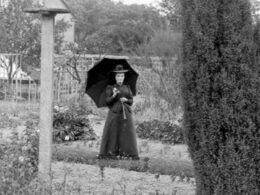From James Baldwin: Early Novels & Stories

This year marks the centennial of the birth of James Baldwin, who was born in Harlem on August 2, 1924.
Influential and respected during his lifetime, Baldwin’s reputation has grown immensely in the years since his death in 1987. It will probably come as no surprise to many of our readers that the Library of America volume collecting his essential essays is the third best-selling book of the nearly 400 volumes published in our 42-year history, behind only Thomas Jefferson and Mark Twain.
In late 1948, Baldwin published in Commentary magazine his first notable essay. “The Harlem Ghetto” begins: “Harlem, physically at least, has changed very little in my parents’ lifetime or in mine. Now as then the buildings are old and in desperate need of repair, the streets are crowded and dirty, there are too many human beings per square block. Rents are 10 to 58 per cent higher than anywhere else in the city; food, expensive everywhere, is more expensive here and of an inferior quality; and now that the war is over and money is dwindling, clothes are carefully shopped for and seldom bought.”
Yet, even as conditions in the neighborhood deteriorated, Baldwin returned again and again for the rest of his life; as he told an interviewer in 1970, the only place in America he felt “really at home in the world is Harlem, where people know what I know, and we can talk and laugh, and it would never occur to anybody to say what we all know.”
Seven years before he wrote his article for Commentary, Baldwin ended his career as a teenaged preacher at a storefront Pentecostal church. Now 24 years old, his attitude toward religion had changed substantially, and he wrote, “There are probably more churches in Harlem than in any other ghetto in this city and they are going full blast every night and some of them are filled with praying people every day. This, supposedly, exemplifies the Negro’s essential simplicity and good-will; but it is actually a fairly desperate emotional business.”
Harlem and its churches provide the setting for his debut novel, Go Tell It on the Mountain, which came out in 1953. A decade later he dusted off one of his early drafts for an episode in novel and published it separately, as a story titled “The Rockpile.” We present the story, with an introduction about the novel’s autobiographical elements, as our Story of the Week selection.



